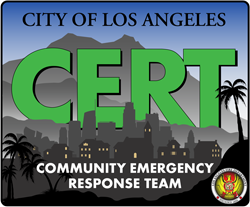CERT Flashcards
Unit 5 – Light Search & Rescue
locate;
treat airway, major bleeding, and shock;
evacuate;
warn others;
continue size-up while minimizing the number of rescuers and time spent inside the structure
Partial or total collapse
Tilting
Obvious structural instability
Building off foundation
Superficial damage
Broken windows
Superficial cracks or breaks in the wall surface, for example, fallen or cracked plaster
Minor damage to the interior contents
Pancake voids – floors collapse diagonally onto each other, creating voids in the areas where the floors remain attached to the walls.
Lean-to voids – a collapsed wall or floor leans against an outside wall, creating a void where the floor remains attached to the wall.
“V” voids – floor or wall collapses at or near the center, creating voids on either end next to the walls.
Individual voids – spaces into which the victim may have crawled for protection (bathtubs and the space underneath desks). Children may seek shelter in smaller spaces like cabinets.
Visible signs of damage
Decorative work damaged or fallen
Many visible cracks or breaks in the wall surface
Major damage to interior contents
Building still on foundation
What should be done?
In what order?
Remember your goal: to rescue the greatest number in the shortest amount of time.
locate;
triage;
treat airway, major bleeding, and shock;
continue size-up;
and document.
How many people live (or work) in the building?
Where would they be at this time?
What is the building layout?
What have you seen or heard?
Has anyone come out?
Gather the facts
Assess and communicate the damage
Consider the probabilities
Assess your situation
Establish priorities
Make Decisions
Develop an action plan
Take Action
Evaluate progress
Disorientation
Secondary collapse
At night, more people will be in their homes, so the greatest need for search and rescue will be in residential settings.
Conversely, during the day, people will be at work, so the need will be in commercial buildings.
Search and rescue operations may also be affected by where people are located in their homes and the amount of daylight available.
No rescue should be attempted.
Use tape around the area or mark the area as heavy damage.
CERT members do not have any legal authority to stop or restrict someone who wants to enter an area.
At best, CERT members can warn others about the danger and inform the CERT IC/TL immediately if it is known that people are in the building.
Safety of CERT members
Safety of victims
Protection of environment
Protection of property
Examples of individual voids include bathtubs and the space underneath desks. Children may seek shelter in smaller places like cabinets.
Some types of construction are more susceptible to damage than others.
The type of terrain will affect how the search is conducted.
You can describe different locations within and around the structure by using the ABCD standard, with A corresponding to the front of the building and B, C, and D representing the sides of the building, moving clockwise from A.
Using this system, the area inside of a structure can be further broken down by quadrants to facilitate communication.
For instance, a hazard or victim located closest to the A and B sides of the structure is in the A/B quadrant.
You must communicate your findings to the CERT command post or responding agencies.
Size-up involves assessing the situation and determining a safe action plan (using the 9-step size-up model).
Search involves locating victims and documenting their location.
Rescue involves the procedures and methods required to extricate the victims.
The purpose for which the structure was designed may indicate the likely number of victims and their location.
Is it a house, an apartment building, an office building, a store?
What time of day is it?
An action plan does not need to be written, but when search and rescue operations are required, the situation is probably complex enough that a written plan of some type will be important. A plan should:
Help focus the operation on established priorities and decisions
Provide for documentation to be given to responding agencies when they arrive on scene – Provide for documentation that will become part of the record of the CERT’s overall operation
Keep notes as you develop your action plan. Any changes made to the initial plan based on new information that comes in should also be documented.
What will probably happen? (based on the current facts gathered)
What could happen? (“What if” the situation changes, apply “Murphy’s Law”)
Severe weather will have an effect on victims and rescuers alike and will certainly hamper rescue efforts.
Forecasts of severe weather should be considered as a limiting factor on the time period during which search and rescue can occur.Time of event and day of week
Type of structure
Construction type
Weather
Hazards
The risks involved to the rescuer
The overall goal of doing the greatest good for the greatest number of people
Resources and manpower available

